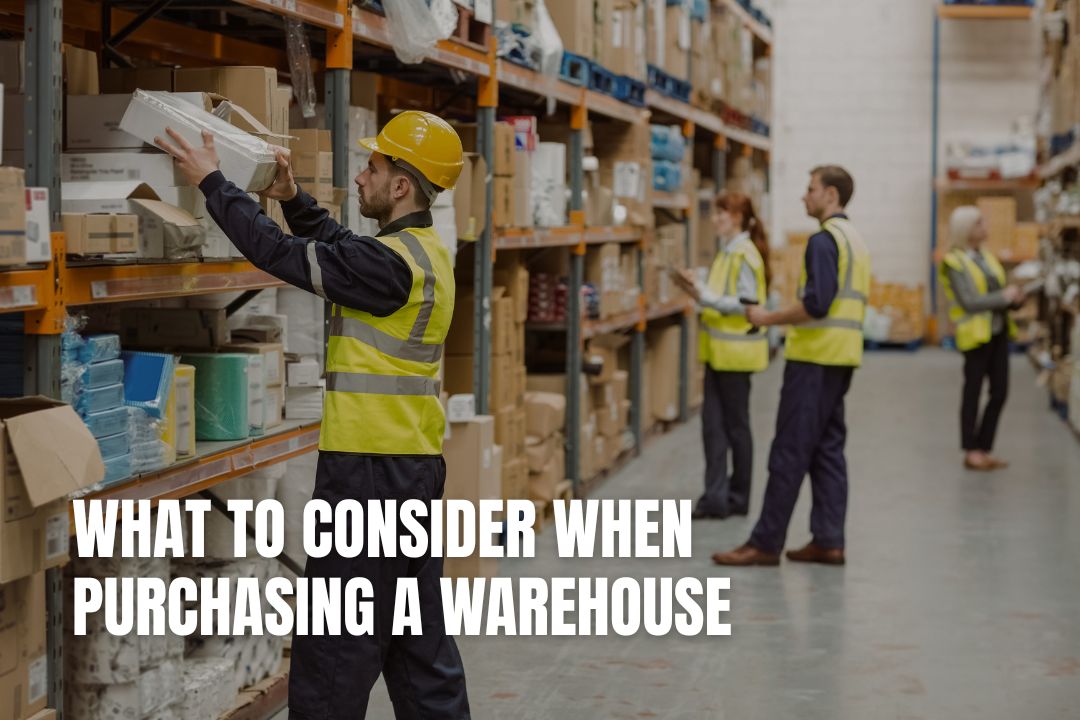
Buying a warehouse is a major investment, whether you’re expanding operations, launching a new business, or upgrading from your current premises. While location, size, and price are usually the first things buyers focus on, many other crucial factors are often overlooked. These hidden details can significantly affect the safety, efficiency, and long-term costs associated with running a warehouse.
Here are some of the key considerations you should take into account before committing to a purchase, especially those elements people commonly forget to check.
At first glance, a warehouse may look solid, but a full examination of its structural condition is essential. Look for cracks in the walls or floors, uneven foundations, leaks in the roof, and signs of damp or mould. Warehouses often endure heavy usage and exposure to the elements, so older buildings may have the aforementioned hidden issues that require costly repairs.
It’s worth commissioning a professional structural survey to highlight any potential problems before you proceed. Spending a little on an expert assessment can save a substantial amount of money in unexpected maintenance down the line.
One of the most commonly overlooked aspects of a warehouse is its doors. These are critical for daily operations, security, and safety. Buyers often assume existing doors are adequate simply because they function, but this is not always the case. Check the condition of all entrances, including personnel doors, loading bay shutters, and emergency exits, and look for signs of wear, corrosion, loose fittings, or damage caused by impacts or attempted break-ins.
If the doors feel flimsy or outdated, upgrading them may be necessary. Robust, high-strength options, such as steel doors, offer far better protection against intrusions and harsh conditions. Stronger doors not only enhance security but can also improve insulation, reduce energy costs, and meet modern safety standards. Replacing inadequate doors early on can prevent operational disruptions and strengthen the overall safety of your site.
Security is a major priority for warehouse owners, especially if valuable goods or equipment are stored on-site. Beyond doors and locks, consider the full security setup. Check whether the property has CCTV coverage, alarm systems, security lighting, perimeter fencing, and access control. If these features are missing or outdated, it’s important to factor in the cost of upgrading them. A secure warehouse reduces the risk of theft, vandalism, and insurance claims, and gives you peace of mind.
Warehouses often have large open spaces that can be difficult to heat or cool. Before purchasing, check whether the property has adequate ventilation, working heating systems, and proper insulation. Don’t forget to inspect roof vents, fans, and any existing HVAC systems to assess whether they are functioning efficiently.
Think about how your business will operate inside the warehouse. Are the spaces arranged in a way that supports efficient workflow? Will you need offices, storage racks, or specialist areas such as refrigeration rooms?
It’s also wise to consider the building’s potential for future expansion. If your business grows, will the space be able to grow with it? A warehouse that offers flexibility and room to adapt is a much better long-term investment.
Purchasing a warehouse involves far more than choosing a large, empty building. By paying attention to the details, such as door condition, building integrity, and security systems, you can avoid expensive surprises and ensure your new premises support long-term operational success.
Taking the time to inspect these often-forgotten elements will help you make a confident, informed decision and secure a warehouse that truly meets your business needs.
A professional survey is crucial because it can uncover hidden problems that aren't visible during a casual viewing. Issues like foundation problems, roof leaks, or structural weaknesses can be incredibly expensive to fix. Investing in a survey beforehand helps you avoid unexpected costs and make a fully informed decision.
You should inspect all doors for signs of wear, corrosion, impact damage, and faulty locks or fittings. Check that loading bay shutters operate smoothly and that emergency exits are compliant with safety standards. Outdated or flimsy doors can be a major security risk and may need immediate replacement.
Essential security features include comprehensive CCTV coverage of the interior and exterior, a reliable alarm system, bright security lighting, and secure perimeter fencing with controlled access gates. These elements work together to deter theft and vandalism, protecting your inventory and equipment.
Think about your five or ten year plan. Does the warehouse have a flexible internal layout that can be adapted as your operations change? Is there physical space on the site for expansion, or does the building's structure allow for additions? Planning for growth now prevents the need for another costly move in the near future. For strategic planning, guidance from a business coach at a firm like Robin Waite Limited can be invaluable.
Buyers often overlook the costs of upgrading essential but non-obvious features. This includes replacing old or insecure doors, installing a modern security system, repairing a leaky roof, or improving the building's insulation and heating systems to manage high energy bills.